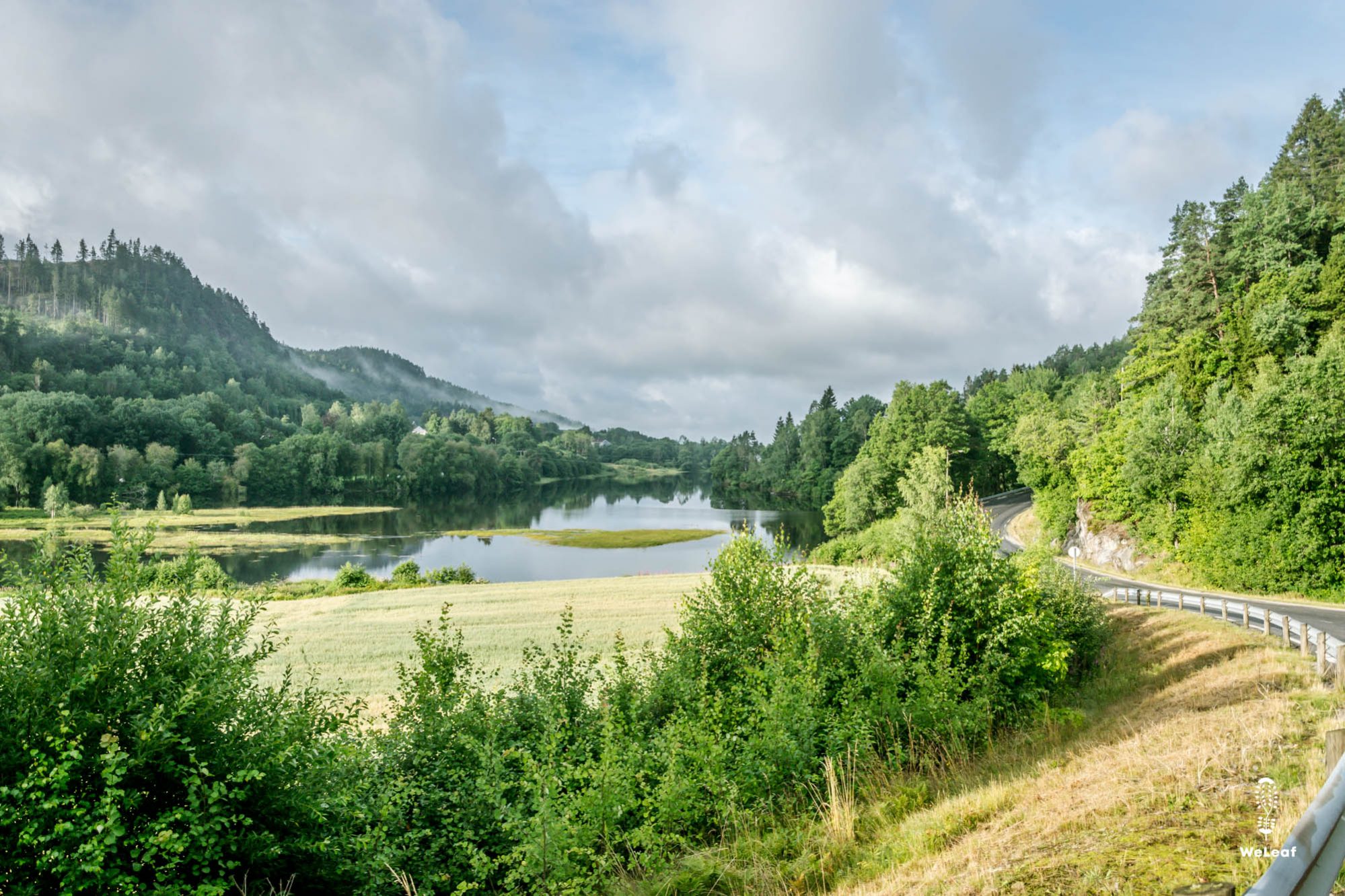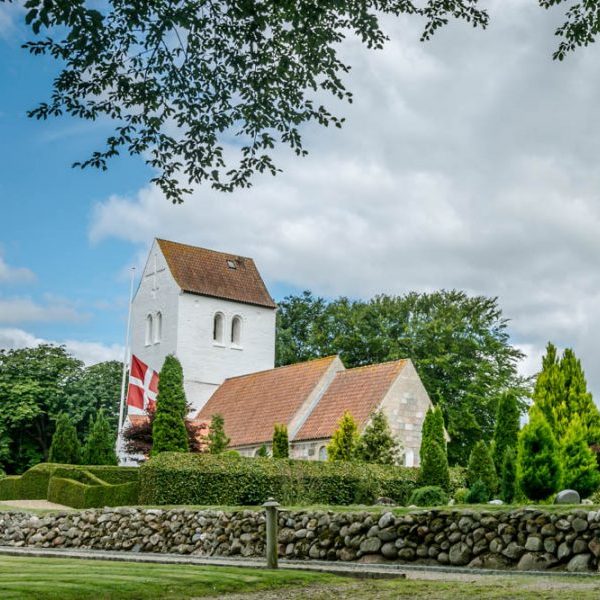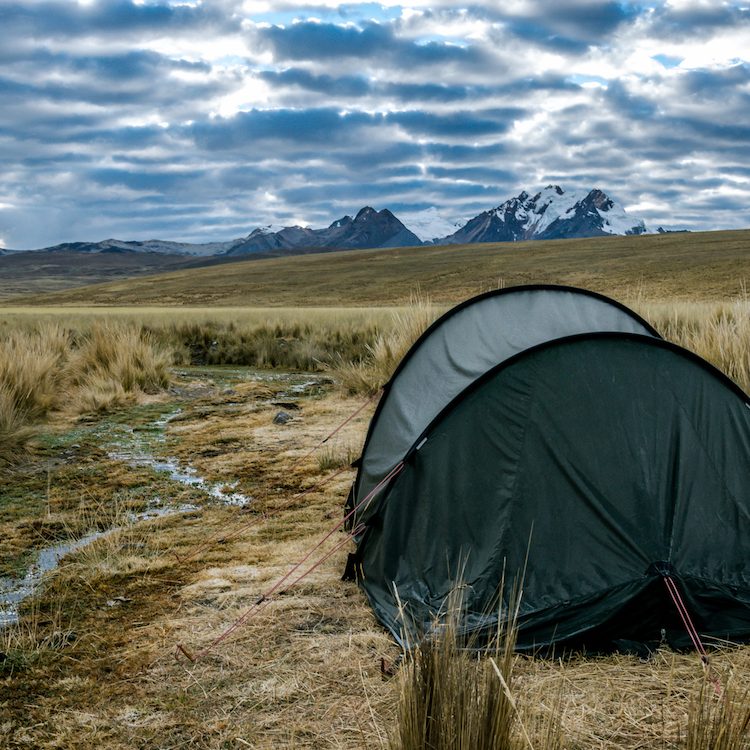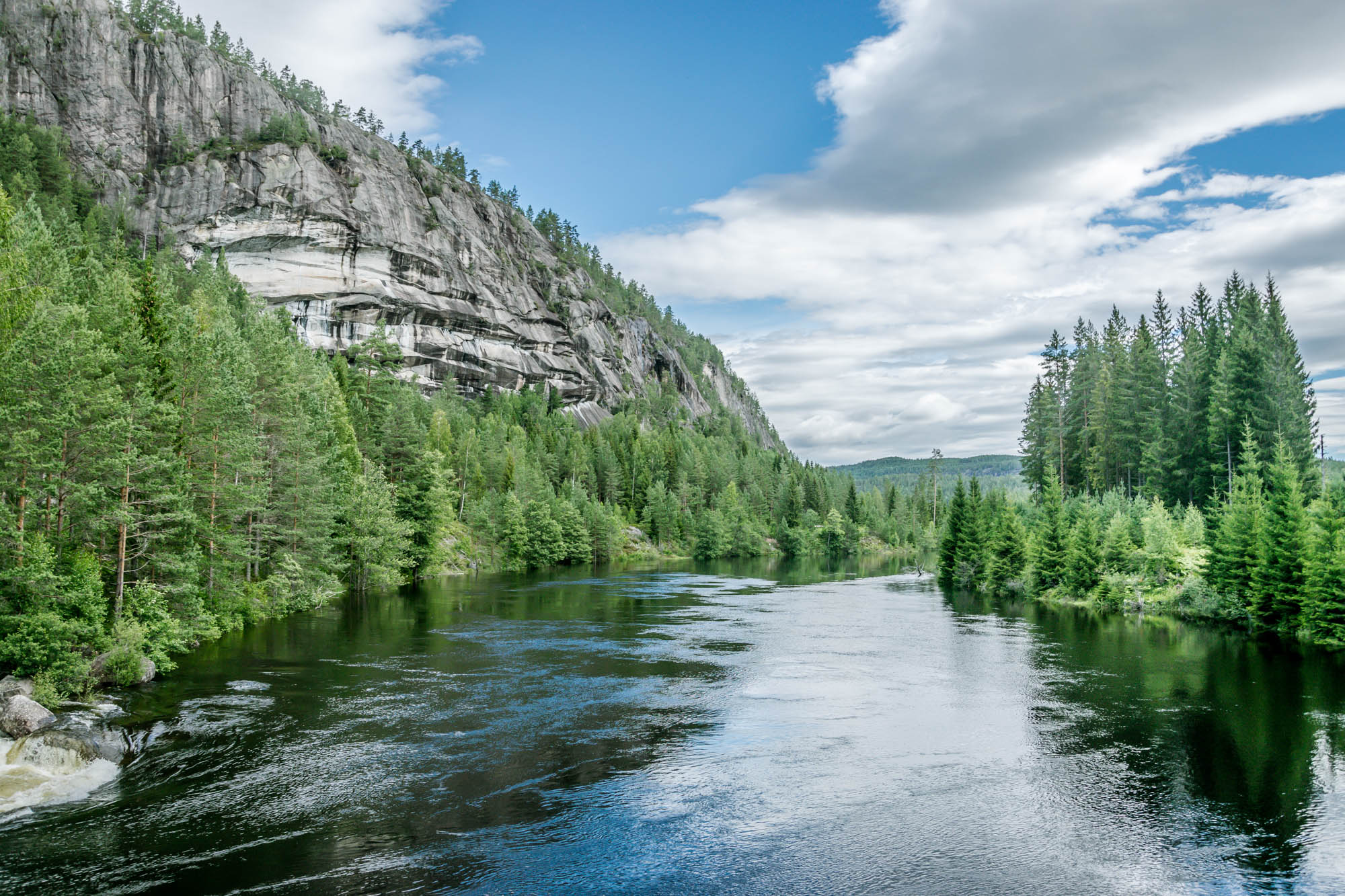
Cycling in Southern Norway

Winter in Sweden
February 12, 2021
The doorstep mile
April 9, 2021
Cycling in Southern Norway
Snow-capped mountains, the northern lights, glittering fjords, Norway captures the imagination of every adventurer. The mythical North Cape is on the wish list of many cyclists. On roller skis, the North Cape was a step too far so we explored Southern Norway. Actually, it doesn't matter where you go cycling in Norway, it's beautiful everywhere. In the south, the Telemark region in particular is incredibly beautiful. It bears the nickname "Little Norway".
Money
Norway uses the Norwegian Krone. In 2021 the exchange rate was: €1 = 10,4 Norwegian Krone.
Norway is a rich country thanks to its oil industry. You notice this immediately when you enter Norway. There is an extraordinary number of luxury cars, many of them electric.
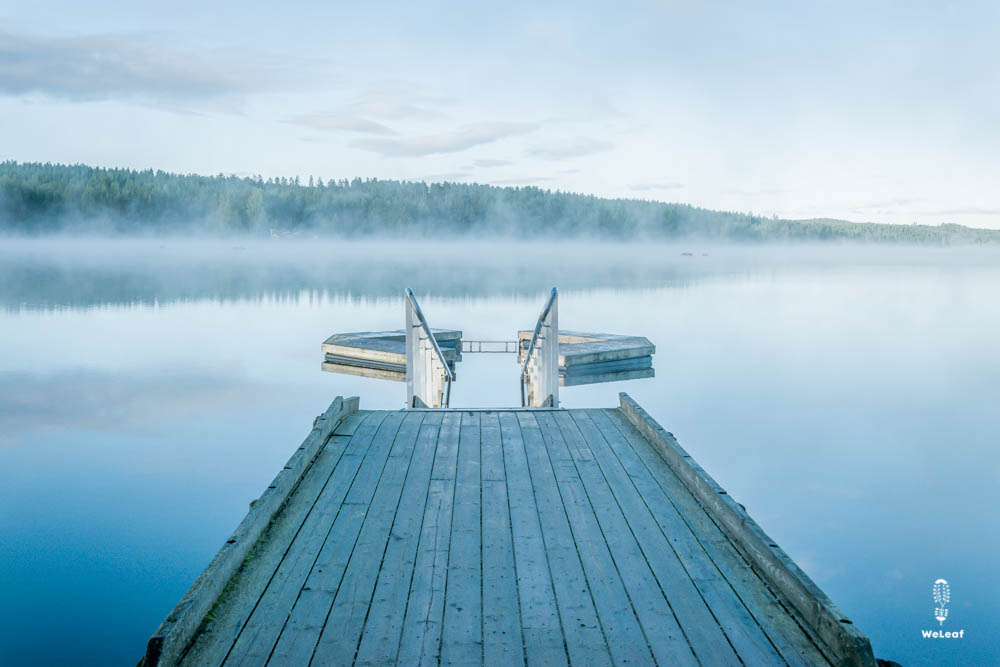
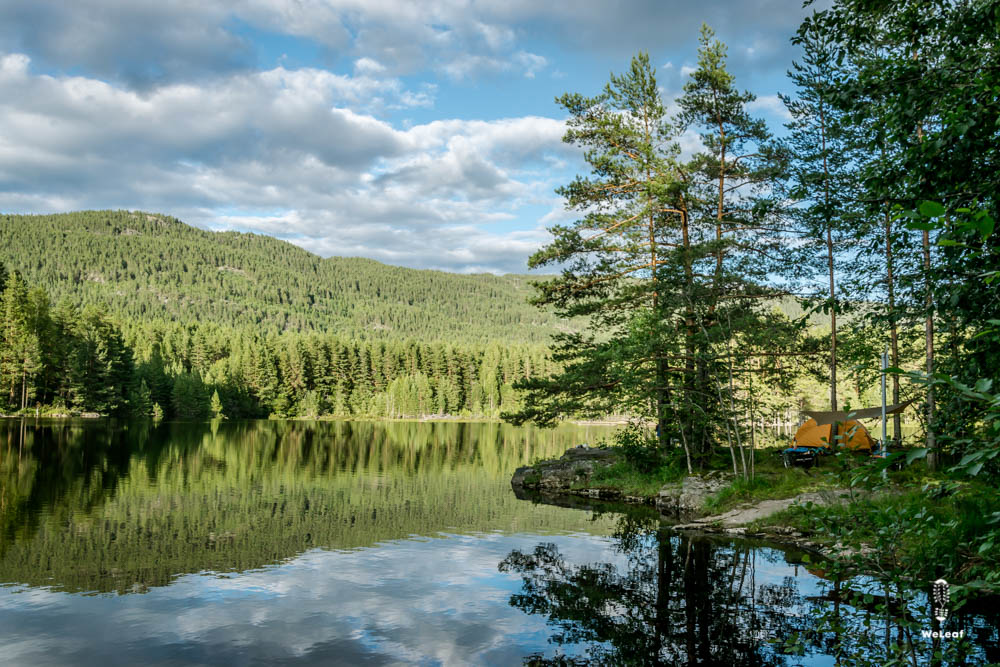
Routes and traffic
We traveled from Kristiansand in the south to Lillehammer and the Swedish border in the east. There were no known bicycle routes on our route so we mapped out the way ourselves. Using Google Maps, Google Streetview, and Komoot we always tried to follow a route as quietly as possible without impossible climbs. The mountains in Norway are steep so there are fewer alternatives than in flatter countries. In the fjords, the routes are often flat, but from one fjord to another you will have to work hard.
Norway does not have a cycling culture like Belgium and the Netherlands. In towns and villages, there are indeed bicycle paths, but often only short stretches. In the larger cities, the government is investing in bicycle facilities with new, wide bicycle lanes. Once outside the cities, you share the road with the cars where you will regularly cycle on busier roads. Fortunately, Norwegian drivers are very respectful and careful. Nevertheless, it is fairly busy on all roads, even on unpaved roads. Finding a quiet alternative on an unpaved road can be a challenge. The unpaved roads are often even steeper than the paved ones. 2020 was an exceptional year due to corona though. Almost all Norwegians went on vacation in their own country this year which made the roads more busy than normal.
Norway has 10 national bicycle routes and a number of regional bicycle routes. Especially in southern Norway, there are plenty of long-distance cycling routes.
- Eurovelo 3 (the Pelgrims route) going from Santiago de Compostela to Trondheim. In Norway, the route follows the Norwegian/Swedish border in the southeast, via Oslo and Lillehammer to Trondheim.
- Eurovelo 1/Eurovelo 12: Both cycle routes follow the coastline of Norway. The EV12 follows the southern part, while the EV1 goes from Bergen to the North Cape.
On the following websites you can find all cycling routes, nationally and internationally: Waymarked cycling routes en Bicycle routes and tours
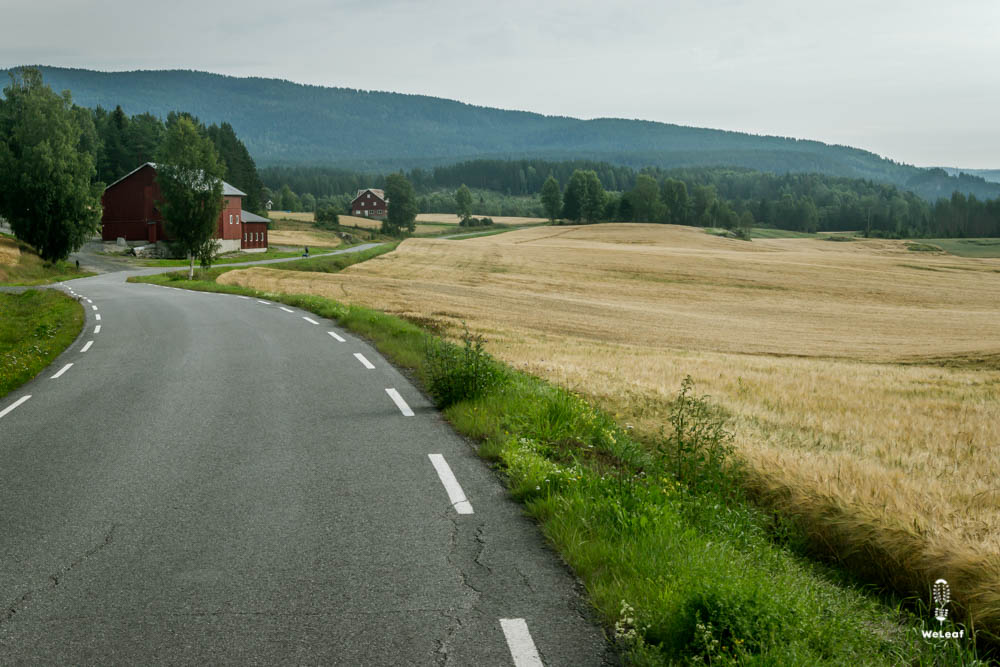
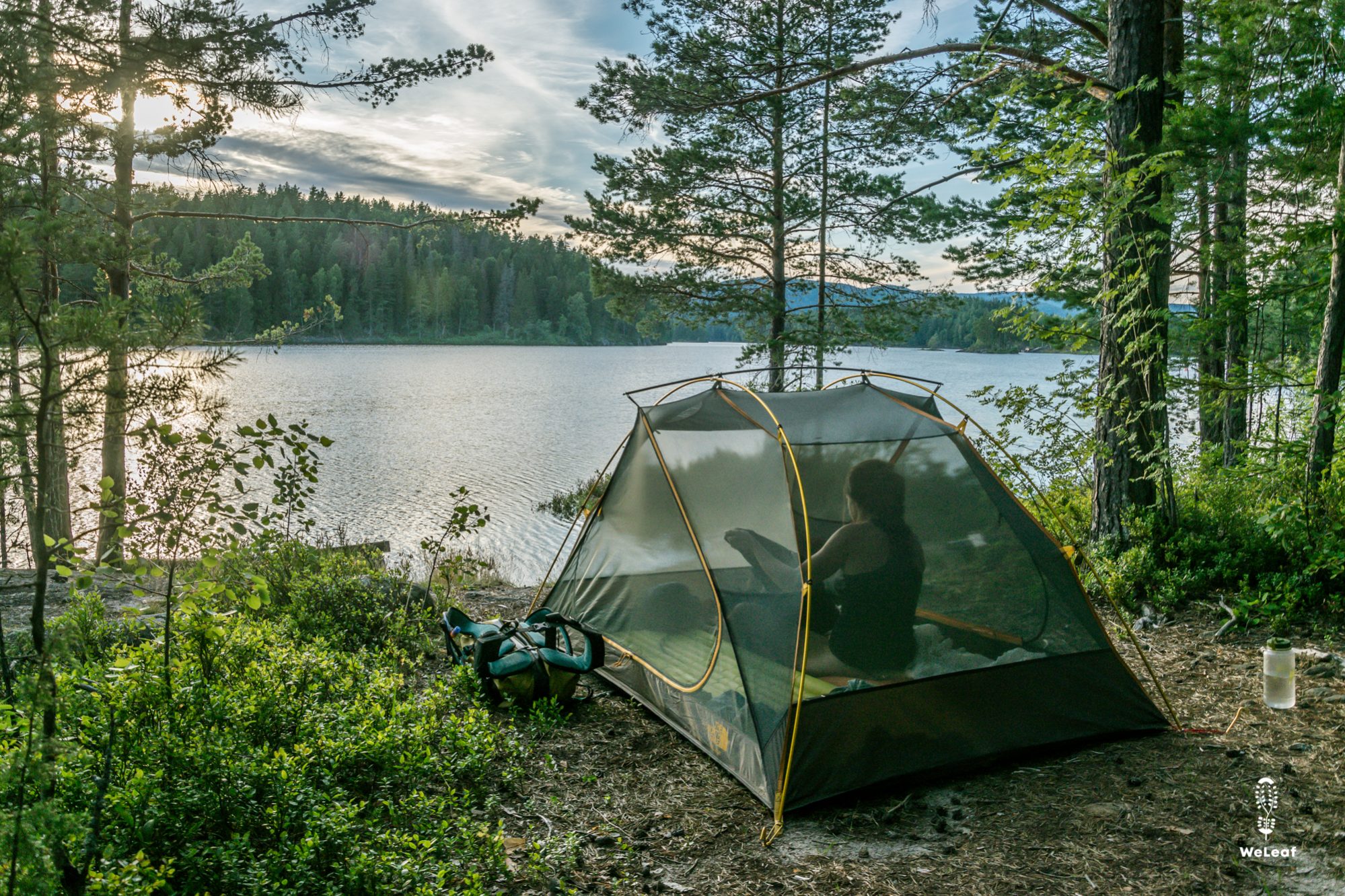
Sleeping
In Norway and Sweden there exists the Allemannsretten: it means that you can pitch your tent on public and private land under certain conditions. For example, you have to stay at least 150 meters from a house, you are not allowed to pitch on cultivated farmland and you cannot stay longer than one night. In reality, it is not so easy to find a place, it is almost nowhere flat and the flat places are often densely vegetated. On the accessible sites, there are usually houses. We regularly slept at public beaches and harbors.
Norway has an extensive network of huts and shelters. Unlike Sweden, most huts in Norway are payed. The websites and map below provide a nice overview of the huts:
Google Maps en Kaart Tourism Noorwegen.
Deze blog describes the system of huts in Norway.
Climate
In southern Norway, the days are long in summer and short in winter. It stays light almost until 11 p.m. and at 4 a.m. the sun rises. 25 degrees C is a very nice summer day, but on the coast, it is often cooler. Because of the mountains, the weather is very changeable in Norway. Especially the west gets a lot of rain, while the east is a bit more stable, especially in the summer months.
The best app/website for weather forecasts is yr.no
Food and water
Norwegian cuisine is very similar to Dutch. Just like us, the Norwegians eat bread for breakfast and lunch. We were pleasantly surprised to discover that the Norwegians do not prefer sourdough bread, but the bread as we know it. In addition, knäckebrød is very popular as a snack or for breakfast.
The cheapest supermarkets are Rema1000, Kiwi and Extra. There are a lot of choices, but it takes some time to find ingredients that are not too expensive. We ate regularly:
- pasta with cream or pesto
- tortillas with beans or lentils, or taco dinner kits. This is the typical Friday evening mean in Norway and Sweden
- vegetarian curry with rice or tortillas
A strange specialty in Norway is brunost. It is a brown cheese with a sweet caramel flavor. It is incredibly popular in Norway and can be found as a large block, spread, or in a tube.
The Norwegians say that you can drink all running water. So the water of most rivers and lakes is drinkable. Be careful if there are houses and agriculture upstream. Avoid stagnant water because of algae and bacteria. Along the main roads are often public toilets where you can find drinking water.
White gas is Alkylatbenzin 4T in Norway, and can be found in hardware stores such as Biltema. A one-liter bottle costs about 40 Krone, which is a lot more expensive than white gas in the Netherlands. Gas cans are also available at Biltema.
Average prices of basic products
Norway is an expensive country. In the supermarket you pay on average fifty percent more than in the Netherlands and Belgium. Especially fruits and vegetables are very expensive, while other products are sometimes comparable. Don't worry, it is possible to find affordable products.
Some prices:
Bread: starting at 8 Krone (€0,8)
1 kilo of bananas: 18 Krone (€1,8)
1 liter of milk: 15 Krone (€1,5)
400 gram of cheese: 32 Krone (€3,2)
Small jar of pesto: 15 Krone (€1,5)
We always slept in our tent or in houses of people who invited us. Our only expense was grocery shopping. We have been 32 days in Norway and spent an average of €8 a day.
Good to know
Free wifi at Rema1000: All Rema1000 grocery stores have free Wi-Fi.
